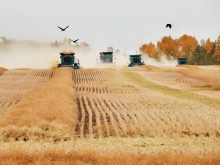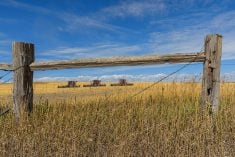In this column, I’ll walk you through the first four of the seven key practices of successful farm managers.
Let’s say your family members have taken personality and risk tolerance evaluations and discussed the results. This helped you clarify why some people react the way they do when making decisions or in stressful situations. This work can be classified as “lifelong learning.”
This discussion will help your family decide who’s responsible for each aspect of the business.
Discussing individual personality types and risk tolerance levels can help everyone understand who is willing to take on more responsibility and who is better suited to take on a specific role such as managing production, livestock, finances, safety or human resources.
Read Also

Gentle treatments for pain in the neck
Heading toward year-end, people unknowingly tense up against the cold and busyness, causing neck pain that can often be treated with appropriate support and gentle mobility, athletic therapist Kathlyn Hossack says.
Accurate financial data
Now that there is someone specifically responsible for the financial management of the farm, someone with an interest in numbers and budgets, that person will want to track and benchmark the farm’s financials against accepted industry standards to see how the business is doing.
First, they will need to meet with the accountant and banker. Proper year-to-year comparison and benchmarking requires good financial data. That starts with accrual-based financial records.
Seeking help
You have already engaged your accountant and banker in your financial discussions. You may already be using the services of an agronomist and a marketing advisor.
Starting a plan or strategy is just that, a start. Implementing the plan or strategy is where real change comes from. This is arguably the most critical point in the process and most likely the time when you most need the support of an advisor.
A written business plan
Your business plan should be a multi-level plan. A yearly plan focuses on the upcoming production cycle. A future vision includes plans for expansion and or capital improvements. A human resources plan details if more family members will work on the farm, or if there will be employees. What if someone gets sick? You will also want to include your transition plan, so you know how long each generation is willing to be an active part of the business.
Now, as the farm management team, you need to decide what the business of farming looks like on your farm and write it down.
What markets will you focus on? Specialty markets, commercial markets, seed markets, breeding stock markets? What do you need to do to meet those market requirements?
Who is responsible for which parts of the plan? Who is managing production? Purchasing inputs? Signing contracts? Maintaining records?
This written business plan will help you make better decisions going forward.
To be continued.
Seven key practices
I’ve previously mentioned Farm Management Canada’s research and its findings of seven key farm business practices that top farm managers use. These seven practices are:
- Ongoing skills development, lifelong learning.
- Make business using accurate financial data.
- Seek the help of business advisors/consultants.
- Have a written business plan, review it annually.
- Know your cost of production and what it means for your profits.
- Assess risks and have a plan to manage and mitigate risk.
- Use a budget and financial plan to monitor your financial position and options.
















